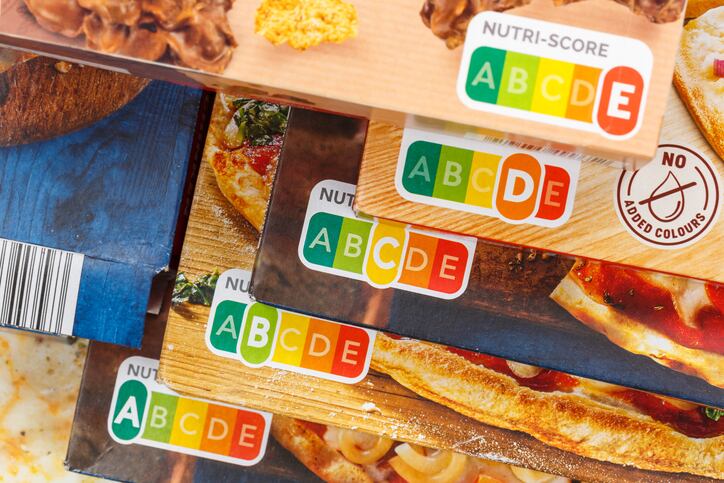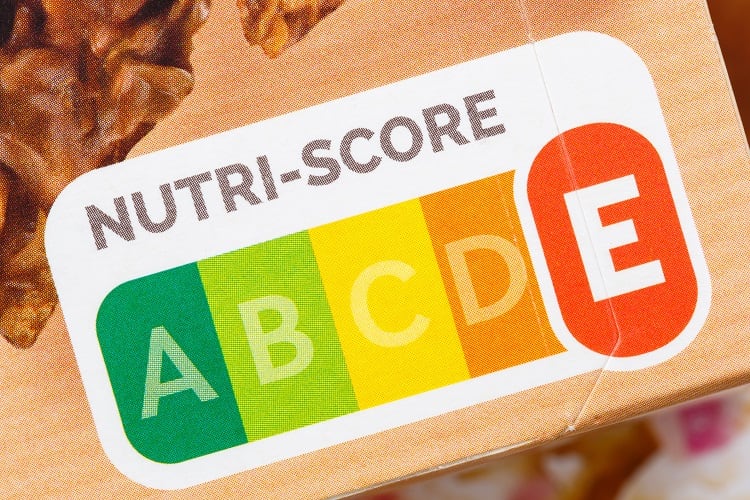Back in 2020, the European Union committed to announcing a harmonised, mandatory front-of-pack (FOP) nutritional labelling scheme. But the plan appears to be more challenging than expected.
The Commission hoped to introduce the label by the end of 2022. At the time of writing in late February 2024, no decision has yet been made.
That is not to say there are no contenders. A proliferation of voluntary nutritional labelling schemes have entered the market in recent years and decades. The best-known include Nutri-Score (used in France and Germany, amongst other countries), the Traffic Light Scheme in the UK, and the Keyhole label in the Nordics.
But with each label championing its own algorithm, they can yield different health and economic impacts. In response, OECD researchers in France have sought to determine the effectiveness of four different FOP labels if each were to be voluntarily adopted across all 27 Member States.
Which FOP nutritional labels have been put to the test?
The researchers selected four FOP label types for their study: a graded scale (Nutri-Score), an endorsement logo (Keyhole logo), a colour-coded nutrient-specific label (Nutri-Couleurs), and a non-coloured nutrient-specific label (Nutri-Repere).
The most frequently used is Nutri-Score, which is followed on a voluntary basis by Belgium, France, Germany, Luxembourg, the Netherlands and Spain. Developed in France in 2017, the algorithm ranks food from -15 for the ‘healthiest’ products to +40 for those ‘less healthy’. Based on this score, the product receives a letter with a corresponding code: from dark green (A) to dark orange (E).
Keyhole is another widely used: the logo is used in Denmark, Sweden and Lithuania. A voluntary logo developed more than 30 years ago, Keyhole be carried by packaged, fresh and restaurant foods that adhere to the scheme’s standards (based on the Nordic Nutrition Recommendations). Conversely those that don’t, cannot.
The UK Traffic Light label was also selected as an example of a Nutri-Colours scheme, which specifies nutritional information per nutrient, specifically fat, saturates, sugar, and salt.
And finally, Nutri-Repere was picked as an example of a non-coloured nutrient-specific label. The Italian NutrInform Batter is another example within the non-coloured nutrient-specific label category.
Is the most used also projected to be the most effective?
A literature review was undertaken to identify the impact of these FOP labelling schemes in real grocery stores (rather than virtual scenarios) and once this was assessed, the researchers scaled up the findings to evaluate the impact of implementing each scheme – on a voluntary basis – across all EU countries.
Results suggest that of the four labelling schemes analysed, Nutri-Score came out on top. The label – which employs a graded scale – showed higher potential for reducing calorie content in shopping baskets, as well as yielding more positive health and economic outcomes compared to other FOP schemes.
From a health risk perspective, Nutri-Score was projected to avert close to two million cases of non-communicable diseases. Keyhole demonstrates effects of a similar magnitude, but with ‘no statistical significance’. Nutri-Repere (similar to NutrInform) showed smaller impacts, whereas Nutri-Couleurs (similar to Traffic Light) has non-significant effects.
Looking to economic benefits, Nutri-Score was projected to ‘significantly’ lower annual healthcare spending by 0.05%. The other labels had negligible impacts.
“By reducing cases of disease, FOP labels have the potential to improve employment and work productivity,” noted the researchers. “Nutri-Score surpasses the other labels with an estimated annual gain of 10.6 full-time equivalent workers per 100,000 individuals of working age across EU countries.”
Making the case for Nutri-Score to be rolled out across the EU
Since the researchers made their projections based on voluntary adoption across the EU, it follows that mandatory implementation of any of the four labels to lead to greater effects. For this reason, they argue their findings provide an evidence base to help inform policy for an EU-wide nutrition labelling system.
“Scaling up a voluntary implementation of a graded scale such as Nutri-Score would result in higher health and economic gains compared with the three other FOP label schemes examined,” they conclude. “A mandatory implementation would yield even greater effects.”
For Serge Hercberg, professor of nutrition at the Université of Sorbonne Paris Nord, and who helped devise Nutri-Score, the study’s findings complement more than 130 existing scientific studies that have ‘demonstrated the effectiveness of the Nutri-Score’ as well as ‘its superiority over existing or lobby-driven labels’.
“Despite the incredible accumulation of evidence, the European Commission has not yet taken the decision to choose Nutri-Score as the unique and mandatory nutritional label for Europe. The powerful economic lobbies – and their political relays – have so far blocked this choice,” noted Hercberg.
“Let’s hope this new work helps to weigh on the expected decision of the Commission.”
But Nutri-Score is not everyone’s label of choice
But Hercberg’s sentiment is far from unanimous. Nutri-Score has been criticised for discriminating against traditional and single-ingredient foods, or those protected by quality schemes.
The Consortia of PDO cheeses Parmigiano Reggiano and Grana Padano have previously spoken out against Nutri-Score, suggesting its algorithm misleads and deceives consumers. The reason is at least two-fold, they argue: Nutri-Score’s algorithm is applied to 100g of product (whereas the average quantity of cheese in a dish is more likely to be around the 20g to 40g mark); and Nutri-Score does not consider the cheeses’ nutritional benefit as an accompaniment.
The greater dairy sector has another reason to be disgruntled: Nutri-Score’s latest algorithm update changes its classification of milk-based beverages which will now be included in the beverage (rather than food) category. As such, milk-based beverages – a category which includes flavoured or sweetened milks – can no longer be classified as A or B, as they had been previously. Instead, they are more likely to be classified, on average, as D/E (or C for those with lower sugar content).
A study published online earlier this month, and conducted by members of academia and the Dutch Dairy Association, has suggested ‘large’ publication bias is at play when it comes to Nutri-Score research. “The large majority of studies that support Nutri-Score are carried out by the developers of Nutri-Score,” noted the study authors.
“There is insufficient evidence to support theoretical health claims, or the use of Nutri-Score as an effective public health tool. What we find is the available evidence is limited and biased,” noted Prof Hans Verhagen, study co-author and academic. “European consumers need proper scientific evaluation of Nutri-Score, conducted by independent researchers unaffiliated to developers of the system, and in real-life settings.
“Therefore, we strongly plea for an independent scientific evaluation by a body as the European Food Safety Authority (EFSA), in the same way as EFSA evaluates health claims on products.”
Source: Obesity Reviews
‘Establishing an EU-wide front-of-pack nutrition label: Review of options and model-based evaluation’
Published 7 February 2024
DOI: https://doi.org/10.1111/obr.13719
Authors: Marion Devaux, Alexandra Aldea, Aliénor Lerouge, Sabine Vuik, Michele Cecchini





